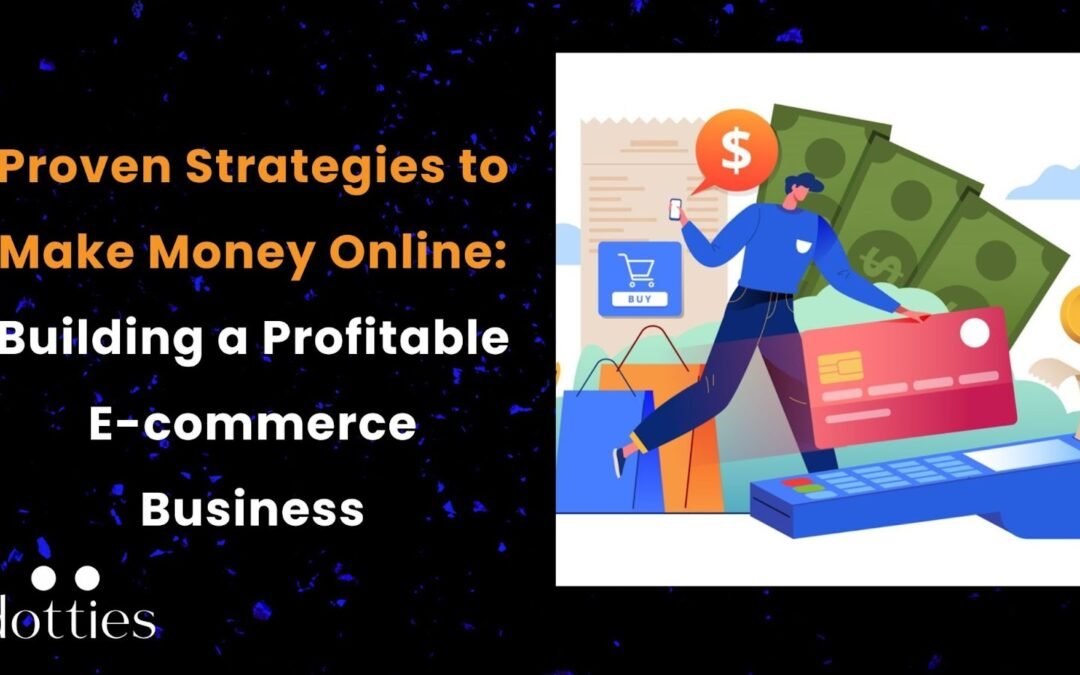The digital age has transformed commerce, opening doors to global markets like never before. Entrepreneurs now have unprecedented opportunities to build thriving online businesses and tap into limitless income potential. However, turning these possibilities into a successful venture to make money online starts with mastering the essential building blocks.
Selecting the Optimal E-commerce Platform
Choosing the right platform is crucial for anyone looking to make money online. The right choice ensures scalability, functionality, and access to your target market. Consider the following options:
eBay

Image Source: ebay.com
A well-established marketplace with a vast user base, ideal for quick setup and immediate sales. However, high competition and fees may impact profit margins.
Key Features:
- Ease of Use: Simple listing process for fast product uploads.
- Auction Functionality: Unique auction-style sales for competitive pricing.
- Global Reach: Access to international buyers with eBay’s cross-border selling options.
- Built-in Traffic: Leverage eBay’s vast customer base without significant marketing efforts.
Amazon

Image Source: amazon.com
Offers access to a massive customer base and fulfillment services like FBA (Fulfillment by Amazon), simplifying logistics. Be mindful of strict seller policies and intense competition.
Key Features:
- Fulfillment by Amazon (FBA): Amazon handles storage, shipping, and customer service for your products.
- Trust Factor: Buyers often trust Amazon’s platform for secure transactions and reliable delivery.
- Prime Members Access: Sell directly to millions of Amazon Prime subscribers for faster shipping preferences.
- Advertising Tools: Robust advertising options to boost visibility and sales.
Shopify

Image shopify.com
Provides a customizable platform for creating personalized online stores, granting greater control over branding and customer relationships. It requires more hands-on management compared to marketplace platforms.
Key Features:
- Customization: Full control over store design and branding with customizable themes.
- Integrated Payment Processing: Secure payment options with Shopify Payments and third-party processors.
- App Ecosystem: Thousands of apps to enhance functionality, from inventory management to advanced marketing tools.
- Scalability: Suitable for both small startups and large enterprises as the business grows.
- Direct Customer Engagement: Build a loyal customer base without intermediaries, fostering stronger relationships.
Developing a Comprehensive Business Plan
A well-structured business plan serves as a roadmap for your e-commerce venture. Key components include:
- Executive Summary: Outline your business objectives and mission.
- Market Analysis: Research industry trends, target demographics, and competitors.
- Marketing and Sales Strategies: Detail how you plan to attract and retain customers.
- Financial Projections: Provide forecasts for revenue, expenses, and profitability.
Crafting a detailed business plan not only guides your operations but also attracts potential investors or partners.
Sourcing and Managing Products
Your product selection and sourcing strategy significantly impact your business’s success. Consider the following approaches:
- Dropshipping: Partner with suppliers who handle inventory and shipping, reducing upfront costs.
- Private Labeling: Customize generic products with your branding to differentiate in the market.
- Wholesale Purchasing: Buy products in bulk at discounted rates to resell at a profit.
Effective inventory management ensures timely fulfillment and customer satisfaction.
Implementing Effective Marketing Strategies
Driving traffic to your online store is essential for sales. Utilize these marketing tactics:
- Search Engine Optimization (SEO): Optimize your website to rank higher in search engine results.
- Social Media Marketing: Engage with your audience on platforms like Instagram, Facebook, and Twitter.
- Email Marketing: Build a subscriber list to promote products and share updates.
- Pay-Per-Click Advertising (PPC): Invest in ads on platforms like Google Ads to drive targeted traffic.
Consistent branding and quality content are vital across all marketing channels.
Enhancing Customer Experience
Providing exceptional customer service fosters loyalty and encourages repeat business. Focus on:
- User-Friendly Website Design: Ensure easy navigation and a seamless checkout process.
- Responsive Customer Support: Offer timely assistance through chat, email, or phone.
- Personalization: Use customer data to tailor product recommendations and communications.
Satisfied customers are more likely to become brand advocates, driving organic growth.
Analyzing Performance and Scaling
Regularly assess your business performance using analytics tools to identify areas for improvement. Key metrics to monitor include:
- Conversion Rates: Percentage of visitors who make a purchase.
- Customer Acquisition Cost (CAC): Expenses incurred to acquire a new customer.
- Customer Lifetime Value (CLV): Total revenue expected from a customer over their relationship with your business.
Data-driven decisions enable strategic scaling and sustained profitability.
Conclusion
Embarking on an e-commerce journey requires careful planning, strategic execution, and continuous adaptation to market trends. By focusing on these core areas, entrepreneurs can build robust online businesses that thrive in the competitive digital landscape.For a more in-depth exploration of e-commerce strategies, visit the original article: How to Make Money with Ecommerce: A Beginner’s Guide to Your Online Business.

